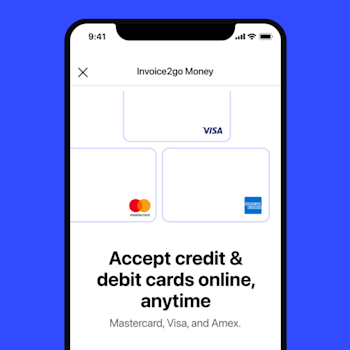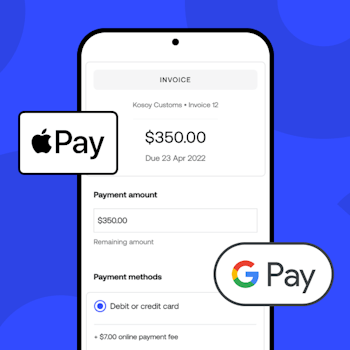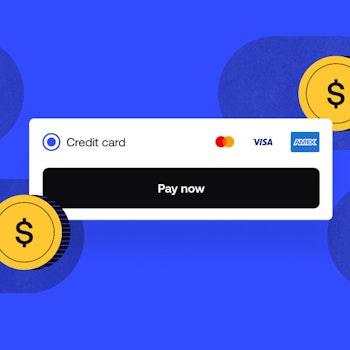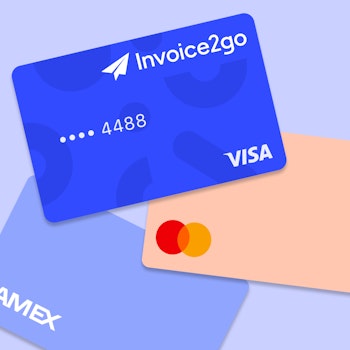
How to Grow Your Self-Employed Business with Facebook – Part 1
We get it. If you’re newly self-employed, you’re probably overwhelmed — and if you’ve been in business for years, the task of starting a business Facebook presence and figuring out how to use it for your business can still feel daunting.
You might even be justifying your lack of social media effort by convincing yourself that it “just doesn’t matter” for you and your business. “I’m all word-of-mouth,” you might be saying – or, “an in-person handshake is more powerful than an electronic, ‘like.’”
While real-world networking is not to be discounted, social media is the place where you can market your business – and engage with your customers, at a scale and rate unprecedented by previous eras of small business. Facebook is one of the best and most manageable resources available to you – with very little hard upfront costs.
Yes, it will take up part of your time – but you can minimize that time investment by using guides and best practices listed in this two-part series. It can’t hurt to give yourself more business-building tools, so why not try it for 6 months and assess its value to your business?
Putting together your Facebook Business Page is easy.
Facebook reaches billions of people around the world every day. Even better news – it connects people to their local businesses and communities every day.
Whether your self-employed business is brand new or has decades of established credibility, your potential clients, current customers and business peers will not only engage with you here when you open a page or group – they’re already expecting that you’ll have one. So, if your business doesn’t yet have a presence on Facebook, it’s about time that it should.
The first thing to keep in mind: don’t be intimidated by Facebook.
If you go online for help or tutorials about Facebook (or any social media efforts) you may be flooded with new “tech age” terms and phrases. But you don’t need to be “techie” to make this platform work for your business. One of the best parts about Facebook marketing is that you can start it and build upon what you’ve started easily – adding and customizing your Facebook page and resources to your business needs as you go along.
Keep in mind that some of the more advanced tools and services that Facebook offers, such as sponsored posts to reach more people and potential customers, will likely include fees. However, they can be minimal compared to other, more traditional avenues of advertising.
To start, you will need a personal Facebook page. This is because every Facebook Business Page needs an administrator (and actual person) who can be responsible for managing it, making changes, and giving permission to other users if needed. So, if you’ve been avoiding Facebook until now, it’s time to make yourself a personal page.
Already have a personal page, but worried what your customers might think about your past Facebook posts or photos? You don’t have to worry about mixing your personal and professional lives because the information on your personal Facebook page will never be shown on your company’s Facebook page – it’s part of Facebook’s policies.
Once you’ve signed up for your personal Facebook page, go to facebook.com/pages/create to begin setting up your new Facebook Business Page.
Once there, click the Get Started button in the Business or Brand box. You will then need to enter your company’s name and select a category. To select a category, type in a few letters of what you think your closest business category is (e.g., “accounting”). If you’re unsure which category your business “belongs” to, don’t worry about choosing the exactly right category at this point – just make an educated guess. You can change it and even add additional categories later.
After choosing a category, you’ll be asked to supply a little more information. This includes providing your company’s address and phone number. You will be asked if you want your page to be public – choose “yes.” You need to accept Facebook’s terms and conditions (available for you to review). Finally, click Continue.
Here’s how to add pictures, your username, basic content, and your story.
Facebook will next ask you to upload any pictures, including the main cover photo – just like on your personal Facebook page. Uploading images is easy and intuitive – just make sure that every photo you choose to upload portrays the type of company you are proud of. Also, you can always go back and change, add or remove photos.
Photos such as previously completed projects, photos of things that inspire your business, and any other images may inspire potential customers to contact you. Just keep in mind that content relating to controversial topics such as political choice or personal beliefs carries the potential to harm your business. It’s a good idea to avoid these types of posts.
Does your company already have a logo? If so, add it just like a picture and use it for your page’s “profile photo.” If you don’t yet have a logo or want to create a new one, we’ll show you how later in this article.
Next, you’ll want to tell your community and potential customers about your business.
To do so, click Edit Page Info at the top menu and you will then be able to add your company’s general information. The first open box lets you write a general description of your business. The character count here is limited – so be brief yet specific as it will help with customer’s search results.
Once you’ve completed your description, it’s a good time to either change or add to your categories, if needed. Again, type in a few letters and you will see category options appear that you can then select. You will also be prompted to add the general information as your customers will see it, including your location, business hours, and contact information – phone number, website URL and email.
Usernames are important – so make sure yours is correct.
Your username is what will help people find you on Facebook, because of Facebook’s “search” function. Simply use the name of your business as it would appear on any business list – or even on a sign on your company’s front door. Be straightforward (e.g., “Henderson Accounting Services”) because anything too “fancy” or overly long may confuse people. To create or change your username, click Create Page @Username in the left menu. A window will appear for you to enter this information. Click Create Username when done – and you’re all set.
By this point, you’ve entered your company’s basic information. But there is an opportunity to provide more, detailed information about your small business – and give potential customers more incentive to contact you.
To tell your company’s story in further detail, click See More in the left menu. Then click About, and the Our Story at right. Don’t be too general – get promotional here! Without being too wordy (no one likes to read too much text), make this your “30-second sales pitch” to new customers, giving them reasons why they should explore your Facebook Business Page and consider hiring your company. You can also add one of your best photos here, to further promote the quality of your work. Once everything looks the way you want it, click Publish and you’re all set.
Don’t yet have a logo? Don’t worry. Creating one is easy.
Creating a good logo these days can be easy and affordable. Keep in mind that some of the most recognisable logos you see out in the world today (such as Facebook’s logo itself) were likely to result in extensive design and branding efforts – professional designers devote their entire careers to creating logos that communicate far more than a simple visual mark. However, if you have a small business or are a self-employed business of one, your first logo needs to differentiate your company on a local (rather than international) scale and let people in your community identify you by this mark.
While many sites can help you create your logo, here are two of our favorites, which are exceptionally easy to use:
LogoMakr (logomakr.com/)
LogoMakr is simple and intuitive to use – letting you design a great logo in very little time with hundreds of graphic and typeface options for you to browse. This platform is free for users if you give credit to LogoMakr everywhere you use it. However, if you would like to freely use the logo you create without crediting LogoMakr, there is a reasonable charge for the artwork, which is a worthwhile business investment for the long-term.
FreeLogo (freelogo.com/)
FreeLogo has a similar design feature as LogoMakr, making it easy to use with thousands of design options and images. You must create an account to start. And while they promote it as “free to use,” there is a charge to purchase the logo you create. But once purchased, it is yours to use. Two large advantages of FreeLogo are their customer support and blog, featuring helpful advice and logo success stories.
Regardless of whether you have a logo, are having someone design it, or are using an online site to create one, remember the universal rule of effective logos: keep it simple. Look at larger global companies as examples – the Nike swoosh and the bulls’ eye for Target. They are clean, bold and easy to recognize alone and from far away. And most can be produced using only one or two colors – as well as recreated in just black and white if needed.
Use good grammar and avoid typos – your customers will notice!
As you create new posts for your Facebook Business Page, you will run the risk of making grammatical errors such as typos, run-on sentences, punctuation errors, and more. Honestly, they happen to everyone from time to time – even to people who write professionally for a living.
Still, nothing makes you look more unprofessional than poor grammar in any one of your marketing materials. Customers might now realize why they feel less confident in your business after reading a grammatically incorrect post – but our minds are programmed to pick up on language that feels “off” from what we expect from a professional organization. While the “spell check” tool on most software such as Microsoft Word is helpful, it doesn’t catch everything.
Fortunately, there are spelling and grammar-checking tools out there that can help – and some are free. One of the best is Grammarly (Grammarly.com). It’s an AI-powered writing assistant that acts as a safety net against mistakes and typos.
Luckily, Grammarly is as easy to install as it is to use every day. The free version catches more typos and grammatical errors than Word’s spellcheck, as well as basic flaws in syntax and structure. Of course, you can upgrade to the Premium version for an added fee, which offers in-depth style and vocabulary suggestions that almost makes your content bullet-proof.
If you choose to use an online tool for editing and grammar (which we suggest you do), make sure that it works across multiple devices and applications (which Grammarly does). This will allow you to check all your electronic writing – from all your Facebook posts to customer emails to documents in Word, making you look professional and button-up across the board.
Stay current – and in touch.
Remember, Facebook is not only a way to promote your self-employed services or small business, but to also engage with new and current customers. They may reply to you directly through Facebook Messenger (a 1:1 private message) or publicly on your site.
It’s important that you or someone at your business monitors your Facebook Business Page multiple times a week – or ideally, daily. Regular posts will allow you to remove any unwanted content that may be outdated (e.g., an expired offer) and reply when a customer has posted a comment, question or concern. Remember to say “thank you” when a customer posts a compliment or recommendation for your business – just like in real life, a little courtesy in the digital world goes a long way!
On the flip side, with today’s cultural shift of “immediacy is everything,” making a customer wait days for a response is almost a sure-fire way to lose them forever. The benefit of responding to social media messages and posts promptly not only starts a dialogue with customers – it starts a relationship with them as well. They will begin to see you as informative, friendly, helpful and someone they want to do business with.
Now that you know the basics, look for tips on how to increase your customer base through your Facebook Page in part two of this series! To be continued…
Related Articles

How to accept credit card payments on Invoice2go in 3 simple steps

Accept payments online via Apple Pay and Google Pay

Must-not-miss write-offs as you wrap up 2022 year-end finances

5 ways accepting credit and debit card payments helps your business stay resilient

4 easy ways to increase cash flow today

What is Small Business Saturday and why is it important?
The features and surprising benefits of a well-designed packing slip
